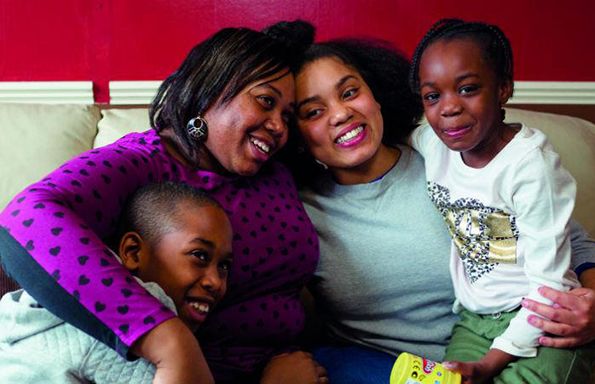
Publication
A time of need Exploring the changing poverty risk facing larger families in the UK
Published July 28, 2021
Child poverty in the UK has seen rapid change over the last two decades, falling from the late 1990s to 2012/13 and rising since then. As a result, child poverty rates converged with rates of poverty for working-age non-parents before diverging again. This paper examines these changes through the lens of family size, asking how horizontal inequalities have changed over this period between larger families – those with three or more children – and smaller families with one or two. We look at trends in poverty rates for the two groups and explore alternative explanatory factors – changes in the composition of who larger families are, differential employment rates, and differences in the impact of social security support.
Our interest in family size is two-fold. First, by interrogating the way different family types have been affected by policy we gain a better understanding of the effects of particular approaches to poverty reduction, with implications for policy debates both in the UK and beyond. Second, larger families are rhetorically important in the popular discourse around benefit receipt, with stigmatising representations of ‘benefit broods’ mobilised by politicians and popular culture to critique a supposed culture of ‘welfare dependency’. This has provided justification for recent significant cuts in social welfare provision, including policies specifically targeting larger families – the benefit cap and the two-child limit. The paper seeks to illuminate the reality behind these popular conceptions by exploring larger families’ composition, employment and poverty rates, even before these policies take effect.
We find that most of the rise and the fall in child poverty in the UK is a story about poverty in larger families. Social security changes are the key driver here: these policy shifts have affected larger families much more acutely than smaller families, simply because larger families have a greater need for support, both because of lower work intensity and higher household needs. This remains true despite steady increases in employment in larger families. Larger families are more dependent on the state, by definition, while children are at home. They are more likely to need support even when things are going well and are more exposed when things go wrong, such as job loss or family break-up. We conclude that to see independence from state support as a goal is to ignore this basic reality, and creates a context where larger families are only tolerated (and financially possible) among the wealthy.
For timely project updates, and nothing else
Your details are safe with us. We will never share them with anyone else, and it’s easy to opt-out at any time. Check out our privacy policy here.


